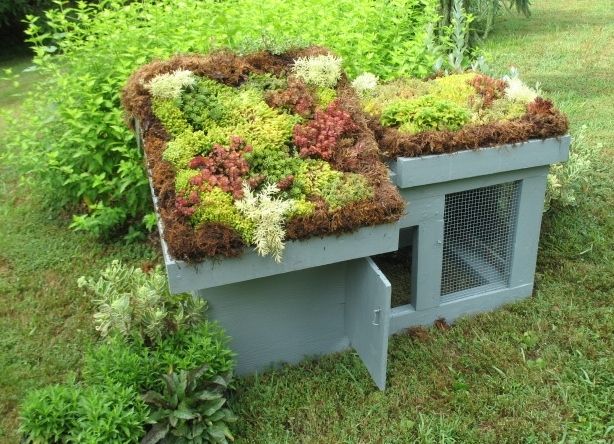I did this project in 2011 and it makes a nice addition to the landscape. This chicken pen is suitable for a pair or trio of my breeder bantams and is also excellent for a broody hen with or without her chicks. It is roughly 2 feet x 2 feet x 4 feet with part being totally enclosed and part having wire mesh as the floor, sides and top. The planted green roof areas total three in number and each is 4 square feet so that makes a total of 12 square feet of living roof. It is portable and can be moved across lawn areas for grazing or it can be placed on a frame for easier access at a better height for your back.
The plants are hardy succulents in this case, but other plants can be used. The planting medium is made up of 80% expanded shale aggregate and 20% compost and is 4 inches deep. This is not a "no care" roof - it needs the same attention to water, fertilizer etc. as any garden area. It does have an insulation effect in that it is cooler in the summer and warmer in the winter.
Chickens might have a tendency to graze or scratch on a roof like this, but mine have never done this. They are always under a watchful eye when free ranging and the ground level distractions are so numerous, they do not fly up to the roof.
I hope you enjoy seeing this and might consider building one or several for your chickens.



The plants are hardy succulents in this case, but other plants can be used. The planting medium is made up of 80% expanded shale aggregate and 20% compost and is 4 inches deep. This is not a "no care" roof - it needs the same attention to water, fertilizer etc. as any garden area. It does have an insulation effect in that it is cooler in the summer and warmer in the winter.
Chickens might have a tendency to graze or scratch on a roof like this, but mine have never done this. They are always under a watchful eye when free ranging and the ground level distractions are so numerous, they do not fly up to the roof.
I hope you enjoy seeing this and might consider building one or several for your chickens.






